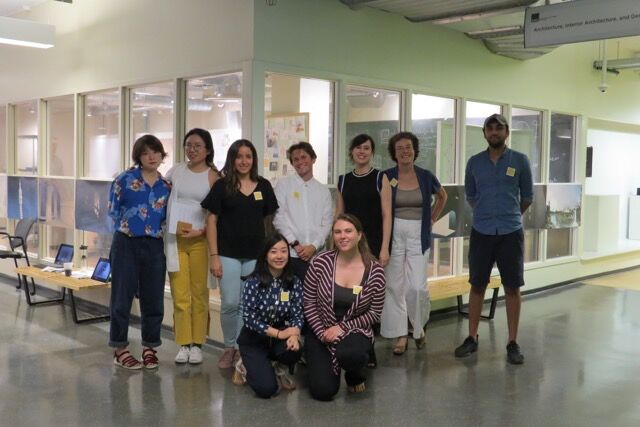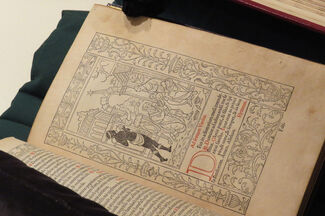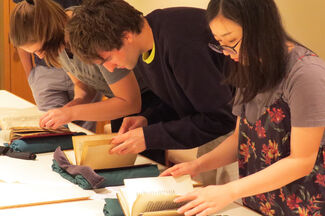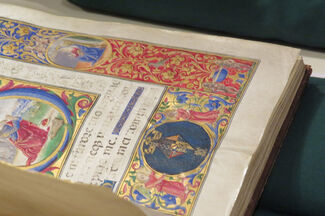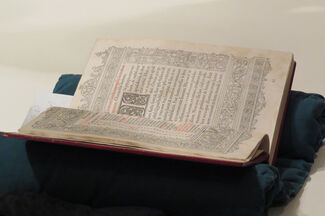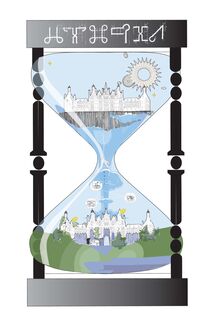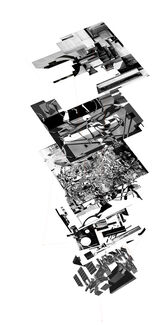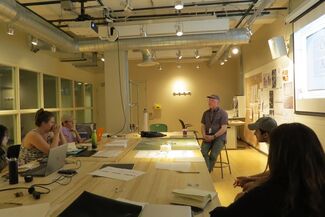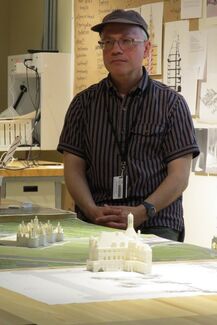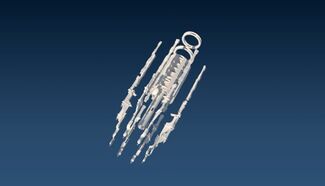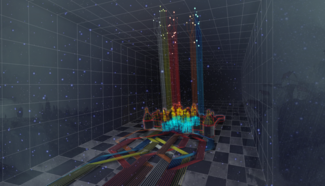
SAIC's "Realizing Chambord"
Taught by Odile Compagnon and Jade Boudreaux. Created by Lina Alsharif, Siddharth Babani, Charlie Miller, Nicole Vendelin, and Chun Zeng. Contributions by Sarah Aziz and Julian Flavin. Videography by Daniel Caven. Sound by Theodore Braziunas.
This year marks the 500th anniversary of the beginning of construction on the Chateau de Chambord, which was initially designed as a hunting lodge for King Francis I, but was never completed as originally intended. To mark the occasion, the Utopia at Work exhibition has been curated to feature the work of 18 international architecture schools, including the School of the Art Institute of Chicago (SAIC). Each of these schools were asked to imagine the future of Chambord while considering the overarching concept of utopia that is deeply embedded in the Chateau’s creation and history.
SAIC's "Realizing Chambord" tells a story that was imagined over the course of a six-week summer studio by a multi-disciplinary group of students. It follows the journey of a vessel, similar to Jason's mythical ship, The Argo, as they travel through the perpetual loop of a utopian society they cannot fully command: they try, they succeed, they fail, and they try again.
About the Summer 2019 Exhibition Experience in France
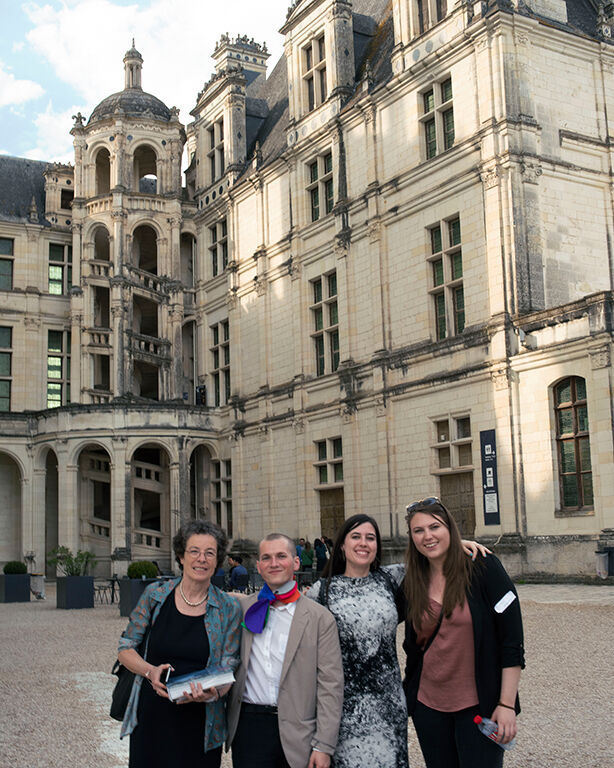
On May 25th 2019, Jade Boudreaux and Odile Compagnon represented SAIC’s Department of Architecture, Interior Architecture, and Designed Objects at the grand opening of the Chateau de Chambord’s anniversary exhibition. With two of the "Realizing Chambord" students, Charlie Miller and Nicole Vendelin, Jade and Odile presented the team’s project at a symposium of all invited 18 schools. Odile Compagnon wrote this about their Utopia at Work experience:
"We had an incredible experience and we wish the rest of the team could all have been there to meet the other teams, hear their presentations, see their exhibitions, and to witness the gratitude from all organizers, curators, and designers.
The projects are beautifully installed in 4 small rooms that the curators called cabinets of utopia, which one discovers as they go clockwise around the Chateau from one section of the historical exhibit to the next. Chicago shares its space with Melbourne, Porto, and Los Angeles. I like that the projects represent their cities and not only their schools. At the end of the exhibition, in the last room, visitors can vote for their favorite project. (Make sure to send all of your friends to Chambord before September 1st, so that Realizing Chambord wins the “prix du public!”)
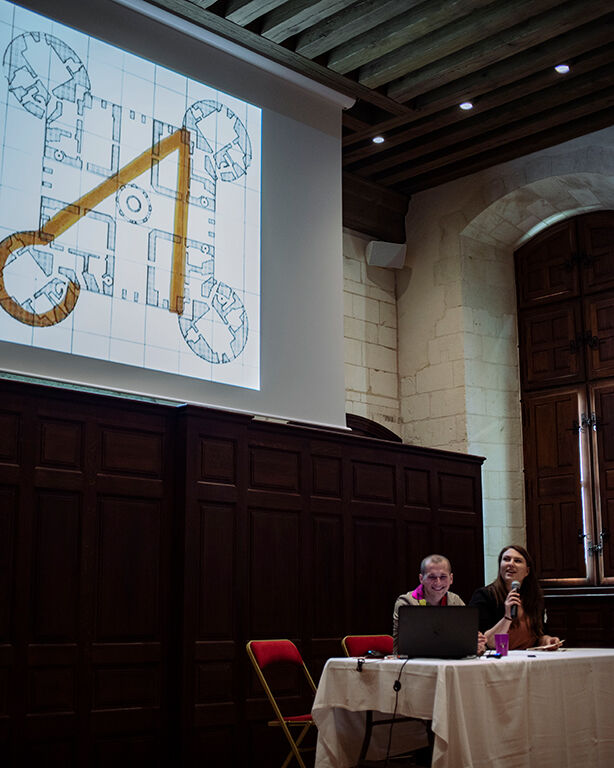
During the symposium, Charlie Miller and Nicole Vendelin did an amazing job representing the team and explaining the work with 20 images, Pecha Kucha style. The symposium with the other 17 schools was insightful and inspiring. The projects were presented by the students themselves with great passion and confidence. The audience was mesmerized and sat with intense and generous attention through four hours of slideshows.
After the symposium, the exhibit officially opened, with speeches and a party in the formal garden. The sunset made the whole event feel like we were on some movie set, the Chateau and its grounds a temporary scenery.
In the magazine that is being sold in the bookstore, Yannick Mercoyrol, the Director of Cultural Programming says this about the project: “If the intuitive force of today’s architects is able to merge with the most advanced research technologies, it is because the reflexion on the object itself (Chambord) induces critical thinking on the role and practice of architecture itself. This is the main subject of Chicago’s meditation about the statute of architects, holding in one gesture the past and the present, the real and the virtual, the whole and the parts. In their oneiric voyage, inspired by the Argonauts, the students from Chicago oscillate between construction and deconstruction, adding and subtracting, calling for the imaginary at the border with reality.”
Seeing the work exhibited with such grandeur and published alongside rare historical artifacts was astonishing and somehow we still have a hard time believing it was true. Kudos to everyone who participated and assisted, we can all be so proud to have made such an impact."
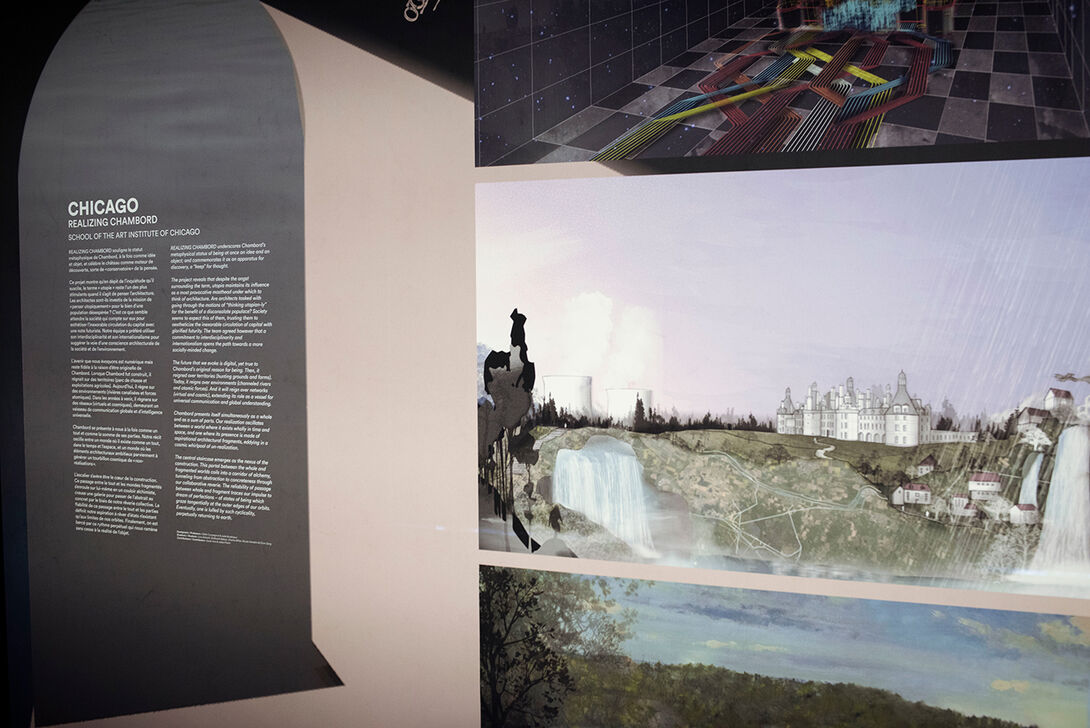
About the Realizing Chambord Summer 2018 Course
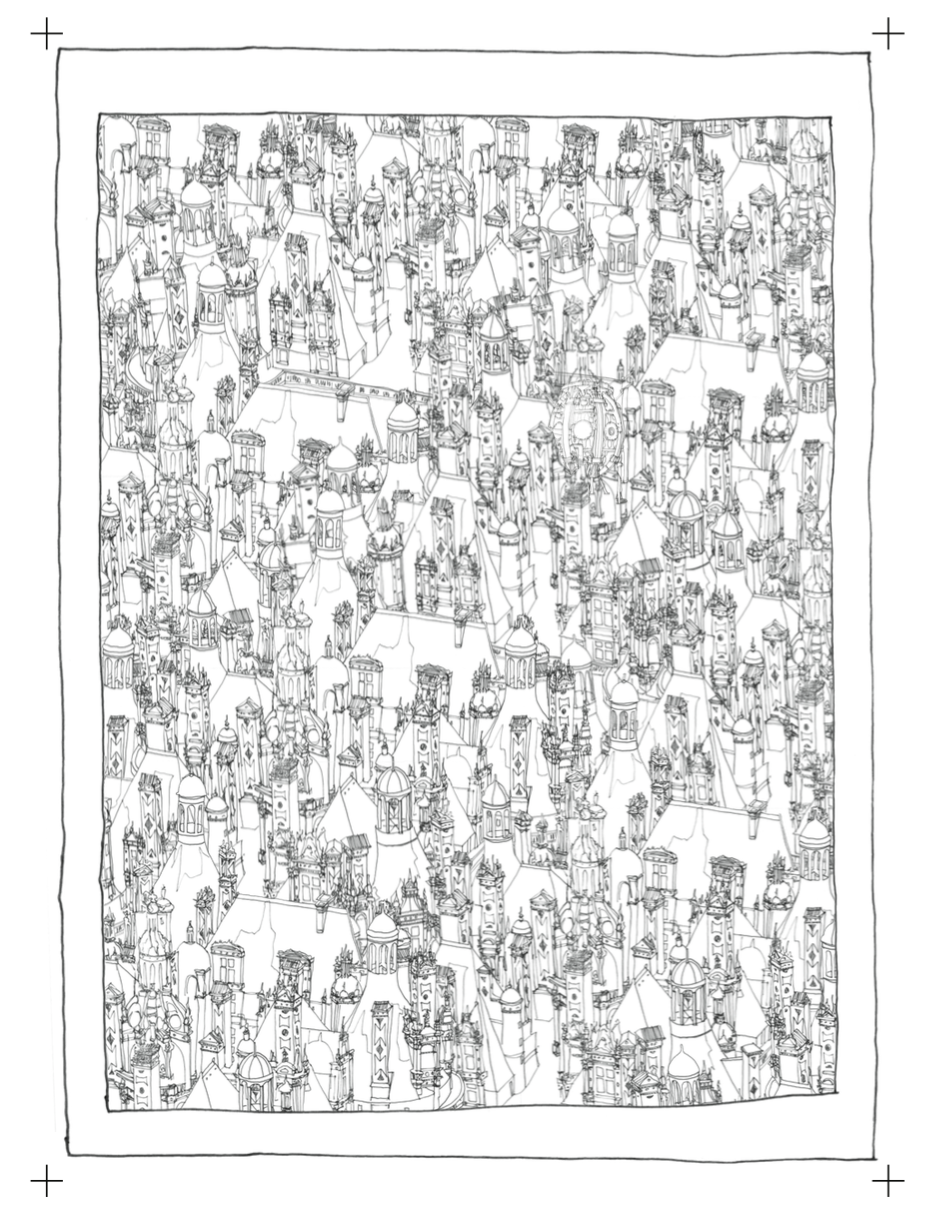
AIADO 4956 July 9th to August 17th, 2018
Mondays and Wednesday (9:00 a.m.-4:00 p.m.) and Tuesdays (6:00 p.m.-9:00 p.m.)
Faculty: Odile Compagnon and Jade Boudreaux
Lines, Words, or Numbers: Which Does Utopia Require Most? With this question, we invite you to enter a reflection on the ultimate future of a historic monument: the Château de Chambord at Chambord, Loir-et-Cher, France and to participate in an exhibition: “Chambord Inachevé,” marks the 500th anniversary of its construction.
The Domaine National de Chambord and the office of Dominique Perrault Architect, who are curating the exhibit, have invited twenty architecture schools, worldwide, to propose a speculative vision for the monument, utilizing the concept of Utopia, which was essential at the time of its development. SAIC has responded to this invitation and proposed a 3 credit elective multidisiplinary summer studio. In this studio, we explored a forward-thinking response not only to address the fundamental values set forth by Renaissance thinkers, but also to demonstrate SAIC’s position in imagining the world of tomorrow, through drawing, storytelling and computing. We discussed questions such as the role of architecture in representing fictional narratives, past present and future intersections between art, science and philosophy, and the importance of buildings in political discourses. The studio produced, collectively, the 2D, 3D and 4D deliverables for the exhibition: a series of 20 digital images and one short film.
Entries from the Realizing Chambord Studio Journal

After just two weeks into the Realizing Chambord Studio and hours of research, translations from the French, drawings of numerous roofs and chimneys, and conversations about Utopia, we are only beginning to see the spark of what we will submit for the 500th anniversary exhibition of the Chateau. Mid-Review is this Tuesday. We will be moving faster from now on. No more of the spinning heads and random mouse clicks that Charlie Miller described in the storyboarding of his impressions about Chambord.
We must now decide between optimism and pessimism, historicism or futurism, environmentalism or formalism, dukkha or sukha, skepticism or cynicism, adding or erasing. We have 440 rooms to deal with, 282 chimneys, 84 stairways (mostly spiral ones), 13000 acres, 127 inhabitants.
At the end of the day, one thing comes out strongly, it is endless motion: Of Chun Zeng’s orbiting Chambord pieces and of letters from Nicole Vendelin's new alphabet inspired by Geoffroy Tory 16th century Champ Fleury.
More to come.
We made great progress last week. We now have Argo. We thought we had discovered it, but in fact Roland Barthes had already described it as “an object with no other cause than its name, with no other identity than its form.” We have Argo’s nauts, explorers like us who glean truths and lessons in the historical building. We have time (well, not really) and space. And we know that what goes up must come back down (or does it?). The team is drawing, composing, and by Tuesday for our next review, we will have all the pieces of puzzle. Everything will be a lot easier from then on.
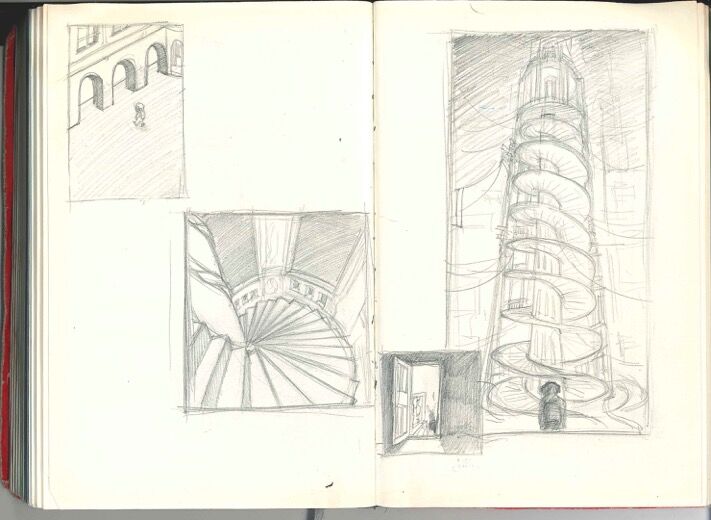
Chun Zeng’s orbiting Chambord pieces
To better understand the spirit of the Renaissance, the class took a field trip to the Newberry Library.
There, Chris Fletcher told us the stories of three different Books of Hours, the prayer books that represented the “popularization for the nobles” of what in the early middle ages could only be said by the clergy. The one which interested us most, that of Geoffroy Tory published in 1525, stood in the center between the 15th century manuscript and a 1549 second edition. Just as in the Chateau de Chambord, you could see that the designer’s pure classical aesthetic marked a turning point from the medieval hand drawn scrolls and illuminations, only to be forgotten in the later edition when the master was dead and purity of style made way to a more popular vernacular. The book and the chateau stand in the crossfire between the desire of one and the realization by many.
On August 6th, Michael Golec came to speak about his work on Geoffroy Tory’s Champ Fleury, a book in which the 16th century humanist and printer presented a new typeset meant for the new machine age, based on the proportions of the human body. We drew parallels between the chateau and the book as Michael explained the relationship between the original 1525 book and its early 20th century English translation by Bruce Rogers. According to Michael, Bruce Rogers' ambition was to bring Tory’s work to the true machine age and create what Tory would have wanted if the advancement in print making had been more developed.
We ask, did Tory anticipate these developments when he made his famous book? Did the designers of Chambord anticipate the 3D printing we are making with the drawings today? Should designers focus on what past designers could have done if they had the technology we have today or should they design in anticipation of the technologies to come? Will there be a time when those two perspectives will merge?
Michael thinks we are close and compares it with riding a bicycle - going forward while being able to pedal backwards because the speed of the bike is great enough.
Thank you Michael for the insight.
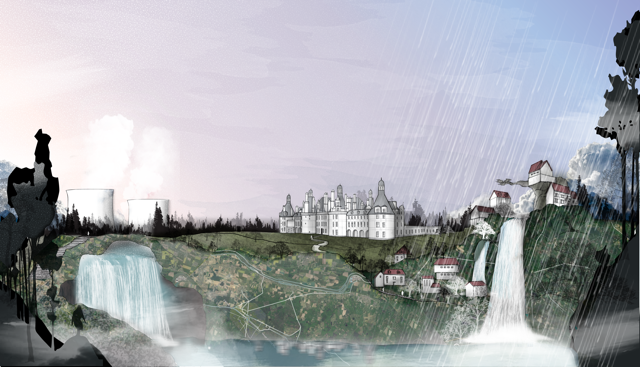
This was a most interesting/challenging class. Thank you to the team for producing such beautiful drawings and deep thinking. What we discovered and exposed is very important and can change, in a positive way, the perception one might have about the role of architects and the practice of architecture. Making a building we have never really seen become an actor in the narrative we created as well as a trigger for thinking about history, culture, and science. The experience we have had these past 6 weeks is marvelous and very unique. If we are so opposed to the idea of this class being repeated, it is not just because of the chateau’s unique anniversary, it is because of the uniqueness of the group we formed. The presentation was a true example of the cohesion that we have managed to build. After the presentation in English, another presentation was given in Chinese with the same effect of giving the audience so much serenity that it took them a while to actually know what to say. This wasn’t fantasy or dream, it was hygge. Exceptional and tough. Thank you for the hard work and for the performance.
